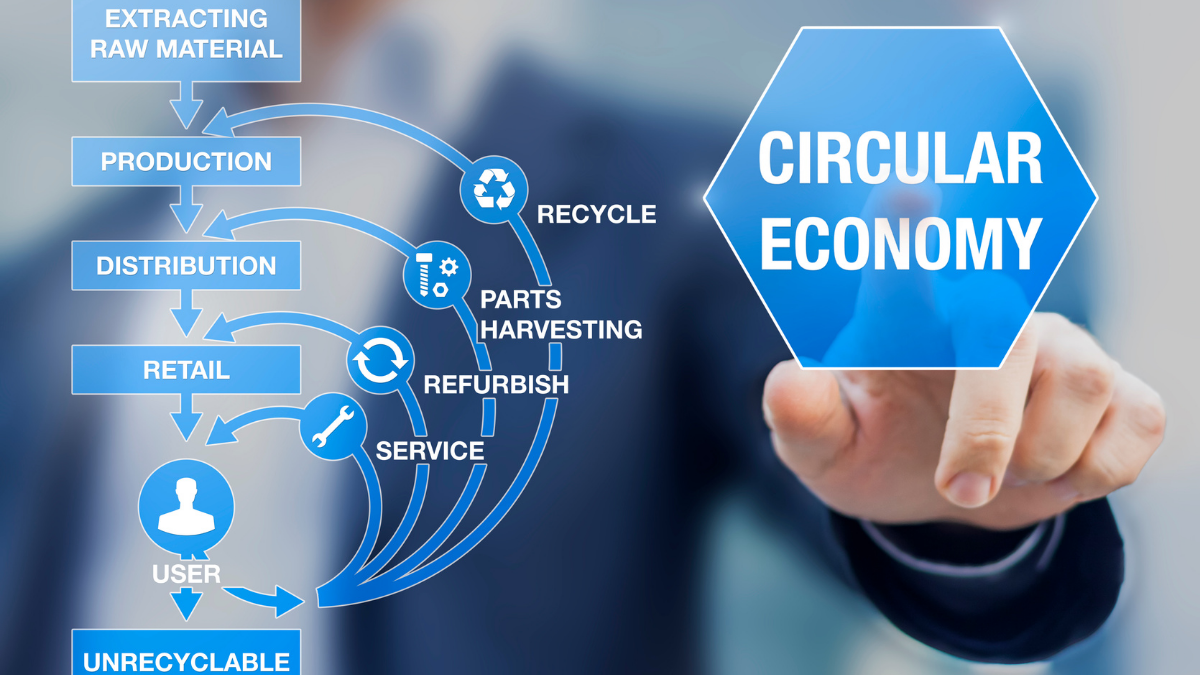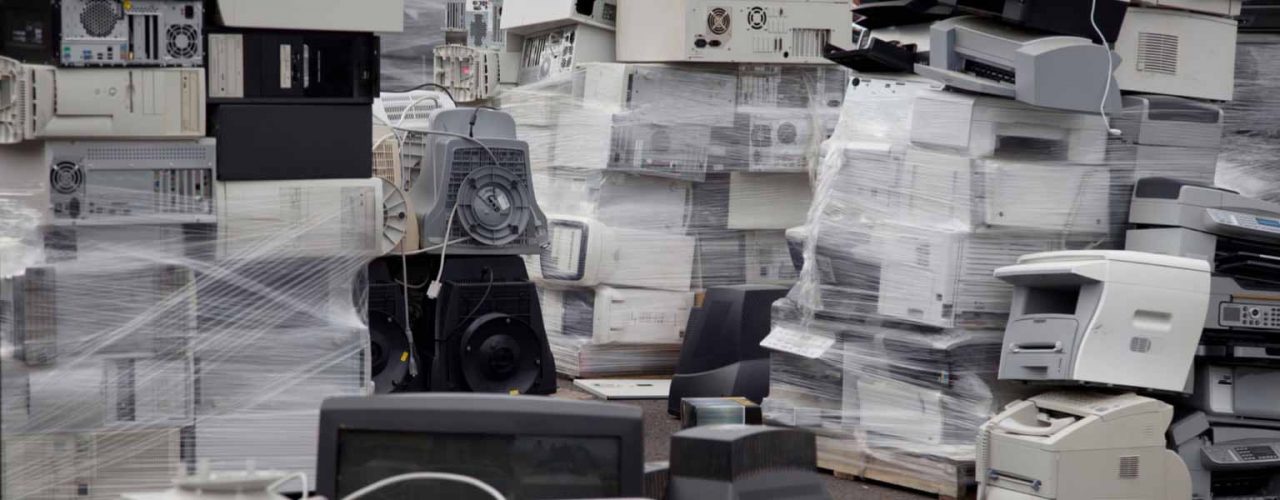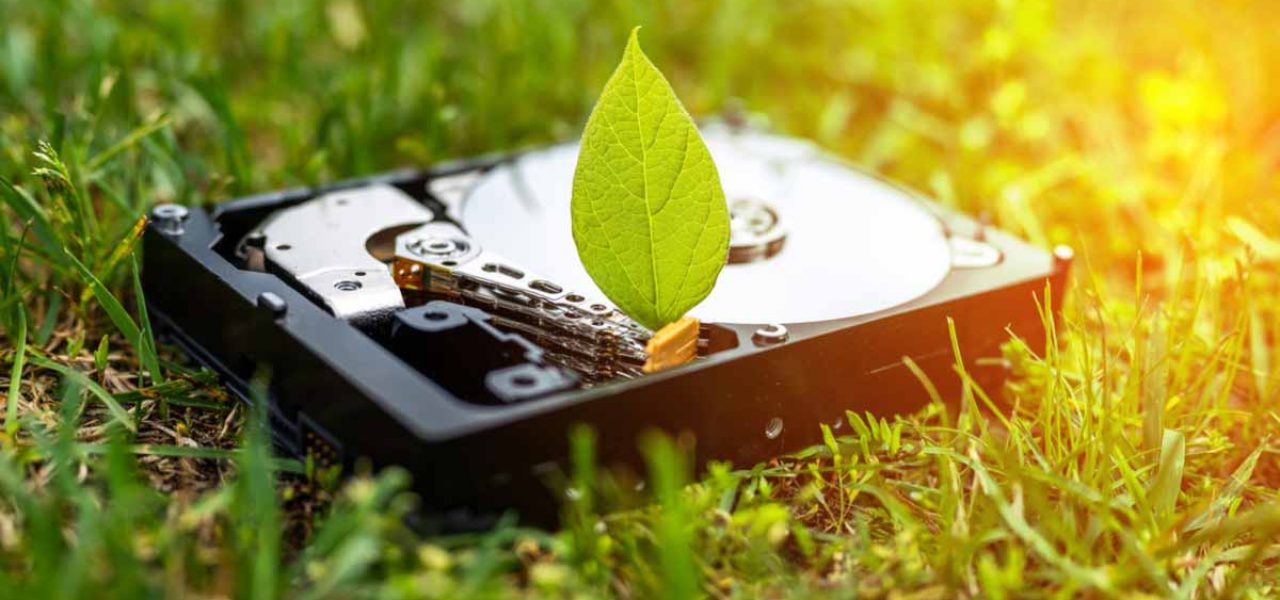E-Waste Recycling is more important than ever before. As of 2021, the average American has more than ten electronic devices in their household, including laptops, PCs, and at least two cell phones. Businesses and institutions operate many pieces of IT equipment on their premises, and in many cases, issue several devices to their employees.
Much of this hardware is intentionally designed to have a short service life, after which the equipment is replaced by more advanced models of the same type or entirely new devices that improve on performance. In 2020, the average desktop system in the consumer sector was replaced after the age of six years. With over 157,000,000 adults in the US with computers, this means that an average of 26,000,000 desktop computers and laptops are being replaced each year. Corporate IT equipment usage often has even shorter life spans with many companies replacing laptops and servers every 3 – 4 years.
With this design for quick obsolescence, there are companies that recycle electronics for cash which helps recycle old electronics such as television sets, desktop computers, laptops, tablets, and mobile phones from ending up in landfill sites.
According to a recent study by the UN, about 50 million tons of such material were discarded worldwide as e-waste.
E-waste is an umbrella term and general abbreviation for Environmental or Electronic waste, consisting of materials and products containing substances that may be damaging or harmful to health or the environment, and whose proper disposal typically requires special handling and techniques.
Much of this material originates in IT equipment and other electronic devices; e-waste has become largely synonymous with “Electronic waste” and describes used electronic devices which are nearing the end of their useful service life. These devices are then thrown away, donated to charities or other institutions, or sent to a recycling service.
E-waste is sometimes referred to as “end-of-life electronics”, “e-scraps”, or “e-scrap”. The US Environmental Protection Agency (USEPA) considers e-waste to be a sub-category of used electronics and “recognizes the inherent value of these materials that can be reused, refurbished or recycled to minimize the actual waste that might end up in a landfill or improperly disposed of in an unprotected dump site either in-country or abroad.”



E-waste recycling also shines a spotlight on environmental protection by emphasizing the proper handling, processing, and management of hazardous waste materials and toxic substances such as mercury, lead, and cadmium. And from a practical standpoint, the recycling of e-waste is reducing pressure on already over-stressed landfill sites and incinerators.
The reduction of e-waste volumes at landfill sites is also beneficial to the environment. Some two-thirds of waste on landfill sites is biodegradable and capable of breaking down into its constituent elements. This process often releases greenhouse gases such as carbon dioxide (CO2) and methane, contributing to global warming.

Precious metals such as gold and platinum can yield monetary value through direct sale or find use as components in specialist manufacturing processes. Ferrous metals like iron or titanium may be used for steel and alloy production in various applications.
Glass extracted from Cathode Ray Tubes (CRTs) in televisions and computer monitors can be reprocessed for use in other products.
A variety of plastic materials recovered from electronic goods may be reprocessed to create numerous other items such as trays, fence posts, equipment holders, and insulators.
Electronic circuit boards often incorporate traces of valuable metals such as gold, silver, tin, copper, and palladium.
Specialist recycling services can recover steel, cadmium, nickel, and cobalt for reuse in new batteries. The base metals recovered from old batteries may also be employed in fabricating stainless steel.
Besides ensuring data security and secure hard drive disposal, HDD shredder and hard drive destruction processes can also yield aluminum ingots used in manufacturing automobiles.
Though highly toxic, mercury is present in many kinds of electronic waste and can be safely extracted using specialist recycling techniques. Once recovered, the liquid metal has applications in the making of fluorescent lights, dental amalgams, and various instruments and meters.

Recycling services or organizations will typically set up specialist bins or take-back booths for the collection of used equipment and waste materials. They will usually provide some form of transport to move the material to recycling facilities and plants.
Mechanical shredders will break the E-waste down into smaller fragments, which are then primarily sorted by hand or under strict human supervision to separate desired components or material types. Materials are then classified into various categories (Reusable, Core Material, Component, etc.).
E-waste fragments are positioned on a conveyor belt, using a shaking process to smooth out the layers of material. The material is then subjected to further crushing, then suction to extract dust particles which may then be disposed of in an environmentally safe manner.
For ferrous (magnetic) materials, a powerful suspended magnet is used to recycle steel and other magnetically sensitive metals from the e-waste stream.
Glass reclaimed from Cathode Ray Tubes (CRT) typically contains several hazardous substances, including lead. Having removed the metals from CRT shards through magnetic separation, special washing lines are employed to clear phosphors and oxides from the glass. Sorting is then employed to separate non-leaded from leaded gas.
At this final stage of the IT asset disposal process, the various materials separated out during the preceding stages are prepared and packaged for onward sale.
This method is used to locate and extract any leftover metals from plastic shards.

Canada's leading e-waste recycling industry association.
This includes over 130 member companies that operate around 300 e waste recycling facilities in the US.
This includes over 130 member companies that operate around 300 e waste recycling facilities in the US.
An industry association with 1600 member companies, 350 of which are e waste recycling services.
A leader in the ITAD industry, TechReset goes beyond recycling computers. We fully repurpose units to extend the life of IT equipment beyond its first use. TechReset offers on-site device removal, certified audit reporting and completely secure data eradication through gold standard data cleanse software or physical hard drive shredding.
TechReset is now a part of Quantum Lifecycle Partners.
1-888-676-4992